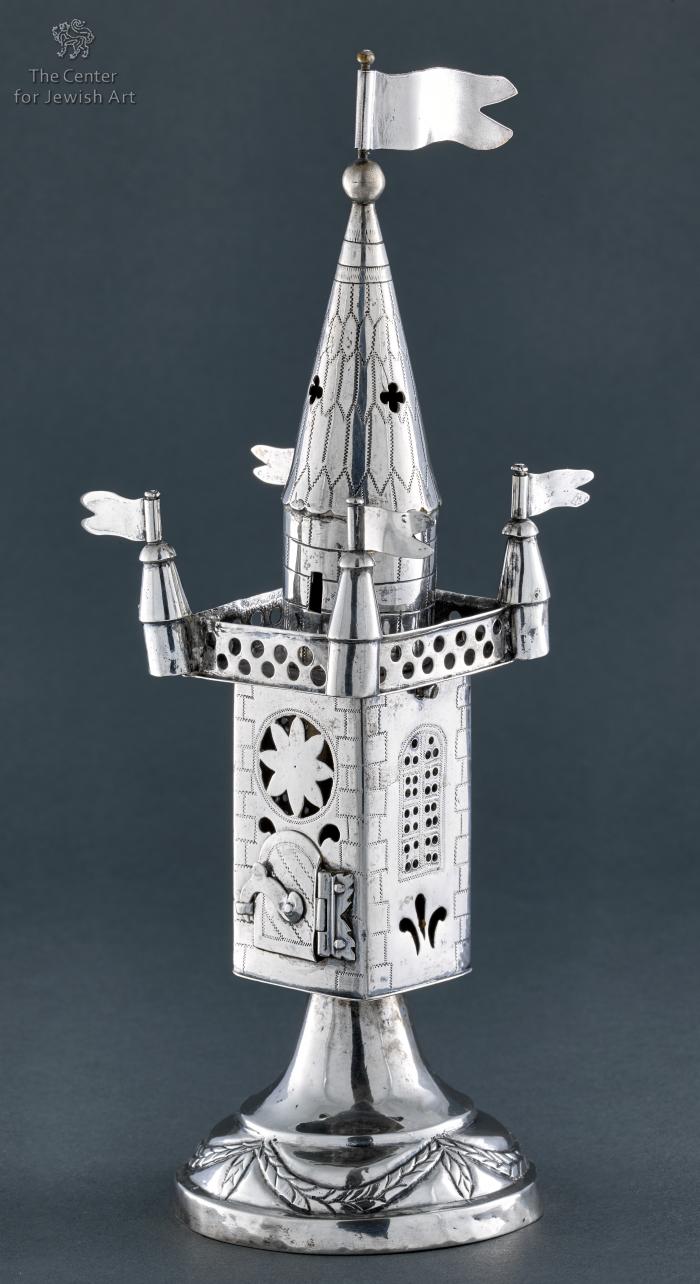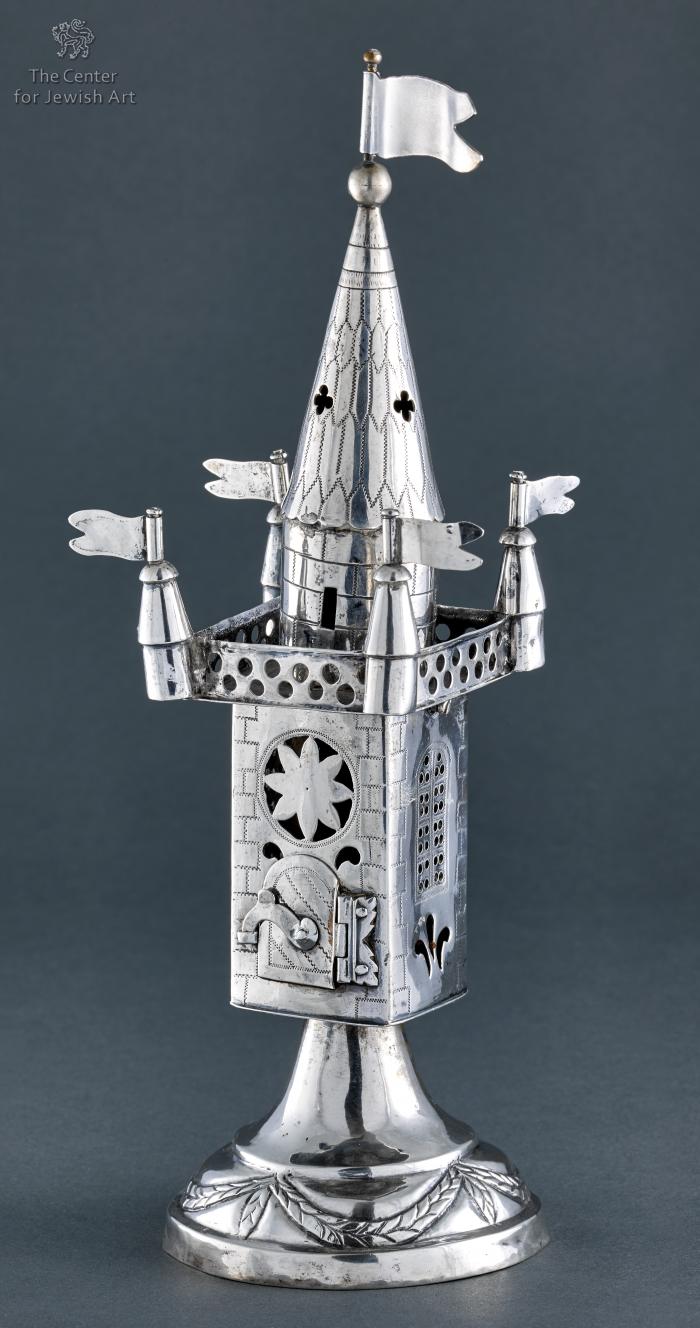Obj. ID: 39172 Besomim, Nuremberg, circa 1800

sub-set tree:
The following description was prepared by William Gross:
In Jewish tradition the end of the Sabbath and other Jewish Holidays is marked by the ceremony of Havdalah (Separation) that differentiates between the Holy nature of the holdiay and the profane nature of the following day. This ritual is accomplished by lighting a special candle with several wicks, drinking wine from a cup and the inhalation of the sweet smell of spices. In the Ashkenazi world these spices were usually held in a container which was often shaped in varying forms.
Such a tower form for a spice box (Besomim), with the square body, balustrade, corner towers and conical upper turret, was typical for Nuremberg, in many different sizes. A fair number of such towers, larger and smaller, are known in various collections. This example has parts marked on the inside with "III", indicating that this was made in a series of at least three pieces. Almost identical pieces were sold at Sotheby’s in 1984 and 1988. Another example exists in the Eis collection in the Magnus Museum Berkeley. A different form, apparently by the same master, was sold at Sotheby’s in 1997. The master is Johann Egidius Roesch, of Nuremberg, active between 1796 - 1838.






